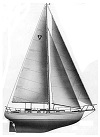
Just a Phase?
I received a charming letter from Gene, admin for theCarversite.com. This site is basically an equipment resource for all things Phase Linear/ Carver Corp/ Sunfire. They also do the Carverfest. They truly celebrate Bob Carver and the equipment produced by companies he started.
At first I thought – some of my friends have pristine samples and unusual prototypes and this might be a good way for them to find someone to truly love and appreciate their old equipment. (I still think that!) I then realized it was also a good opportunity to give a shout out to those companies and to share more of the story with the people that fall in love with the equipment. From my experiences and audio history research I find these companies to be even cooler than they seem from their products.
There are a lot of people between a visionary’s sharp idea and a functioning, out the door product. Sharp ideas take months to prototype, design, and document. Each company had an Engineering Department. Each company had solid, working engineers, designers, drafters. Several people share patents with Bob. The Engineering Departments were responsible for helping to capture Bob’s ideas and make them real, safe, and reproducible. Schematics had to be generated, a parts list with vendors, the circuit board laid out. And the mechanical design – chassis drawings, face panel layouts – lots of skill, lots of talented people.
Let’s not forget the factories! From Purchasing, through Receiving/Stores, Supervisors, Assemblers, and QC Techs into Packaging and Shipping, Admin, Sales, and Service – there were a lot of people that really cared about these companies and the products they were making. And Carver had onsite daycare in the ’80s!
The early Phase Linear, Carver, and Sunfire equipment was built in the USA, hand built by people that actually cared. And rocked! It was not unusual for one guy in a band to get a gig and then bring his buddies in. It’s the Pacific Northwest, with a band in every garage. Guys gotta eat!
Phase Linear had one of the first solder pots in the Northwest in our industry, inspiring Greg Mackie ( Tapco, Audio Control, Mackie) to invest in one, too. People involved with Phase in the old days ended up enriching the audio world by starting or flowing into other companies: Tapco, Audio Control, Spectro Acoustics, Rane, Symetrix, Magnolia, and more.
All three companies, gone now, still have employee events. Think about that! People get together and enjoy the friendships forged in those early days. I have been to several gatherings and I have had a great time every time. The times were special, but the people were, too. And still are, which is why I have such a good time!
If a lot of old equipment seems magical, I don’t doubt it. There are enormous amounts of talent, care, dedication, friendship, and rockin’ good times in there.

Phase Linear Building. Original size built in 1974 can be seen as the grey roof on the right. The expansion was done winter 1976-1977. Phase moved out end of 1982. Carver Corp moved in around 1986. Courtesy Nissen Collection
The First Annual CE Pro Masters Awards
By Chuck Schneider
Recognition. It just might be the ultimate high. From that very first Kindergarten star-laden crayon scribble on Mom’s refrigerator to a Nobel, Pulitzer, Oscar or Emmy–getting recognized by others for what you do or did feels pretty darned swell.
I’ve been fortunate to have received a number of individual awards over my career in CE and remember every situation in vivid detail. Later on, as a rep principal, I gushed like a soccer mom when one of my staff was recognized by a vendor.
More often than occasionally, lots of deserving folks get overlooked when the award “wood” is handed out. That was the thinking when CE Pro conceived of these awards as a cherry on top of their year-long 20th Anniversary sundae. It was first named “50 over 50” but that was deemed not so original. After much debate it was decided that CE Pro Masters had the right ring.
The criteria were pretty straight forward. CE Pro was looking for career CE folks who’ve moved up the ladder of success over the past several decades and made an honest living. Some of these people intentionally stayed out of the spotlight while others have concentrated on their jobs rather than endless self promotion.
Here they are—the first CE Pro Masters.
Leonard Bellezza, Principal, Lyric Hi-Fi & Video: Leonard and his partner, Dan Mondoro, took over this Manhattan Mecca of high end audio-video from founder Mike Kay in 2004 when it celebrated its 45th anniversary. By then they had been with Lyric for 27 and 20 years respectively. Every custom installer who promotes state-of-the-art components to clients owes a lot to Leonard and other audiophile store owners across the country. If a given piece passes muster at Lyric, it’s good enough for you. The odds are it will offer a fair margin. And it will never be a commodity item.
Charlie Boornazian, Sales Manager, Epson America: In that quandary about whether one should be good at a job or well-liked, Charlie has consistently managed to do both. Coming from specialty retail to a rep firm to the factory level, he’s left his mark everywhere he’s been. After Carver and JBL, Charlie hit his stride at Marantz where he rose to VP while building the brand to a position of prominence. Since departing D&M, Charlie has concentrated on the video business and currently is increasing shelf and ceiling space for Epson.
Paul DiComo, Principal, CE Marketing Pros: In these times, spending over 3 decades with one company should be noticed and noted. Paul left Boston area retail to work as NAD’s first sales manager. From there it was off to Polk Audio where he climbed the ladder to Marketing Manager and oversaw the company through any number of changes. Shortly after Directed Electronics bought both Polk and Definitive Technology, Paul became Senior VP of DefTech. Now, with long time Directed associate Al Ballard, he is a partner at CE Marketing Pros where they weave their market share magic for a myriad of the industry’s leading companies.
Dennis Erskine, Owner, The Erskine Group: No people list of any sort is complete without a true Renaissance Man and that’s just one of the reasons Dennis is a CE Pro Master. Despite being a lifelong classical pianist and a possessing a love of music, Dennis’s CE career is really his second act following his success with numerous Fortune 1000 companies as well as NASA and the Saudi Arabian government. For nearly 20 years now he has worked at a number of custom projects and firms, unpretentiously earning a position of respect that earned him election to the CEDIA Board of Directors. Dennis is also an accomplished pilot.
Mark Friedman, President, The New York Marketing Team: It takes a very special individual to run a big CE rep firm in New York City. But this award goes to Mark in good part because of the career stops he made prior to founding his New York Marketing Team. He brought Bob Carver, kicking and screaming, from niche amplifier designer to national demand brand. He was at JBL when real life actual Harmans roamed the halls. While at Onkyo he was the Gepetto of Integra, the upscale custom spin-off brand many predicted doomed to fail. It is now the de facto business model for creating a wildly successful multi-brand strategy.
Jeannette Howe, Executive Director, Specialty Electronics Nationwide: While at Tweeter and PARA, Jeannette and Deborah Smith were our industry’s version of “Thelma and Louise”. Since joining the Nationwide Marketing Group as Executive Director of Specialty Electronics Nationwide in 2006, Jeannette has helped make many an appliance dealer into a custom installer while simultaneously recruiting home theater and custom shops into their first buying group experience. Her efforts and the results have been beneficial to the industry as a whole. And she always looks so in charge at those CES panel discussions.
Larry Pexton, President, Triad Speakers: Outspoken and never shy about sharing his opinions, Larry Pexton and Triad Speakers have been synonymous with the custom electronics industry for 30 years. “Our growth rate and CEDIA’s growth rate are almost identical … right up to the peak year at Expo being 2007 and our peak sales year being 2007,” says Pexton. As the incoming chair of the association, Pexton latest pet project is to help integrators become better business people and maintain profitability, while challenging manufacturers to stop dropping price points to buy market share. “It’s completely irrational group behavior,” he told CE Pro last year.
Richard Schram, President, Parasound: Schrambo earned his early chops making Pacific Stereo a 1970s powerhouse retailer. He parlayed his Asian buying experience into Parasound about 30 years ago. Schram had the first Sony Walkman knock-off. He met a then unknown but talented amp designer, John Curl, and made him a cult figure. Since then Parasound has represented the value niche in CE better than bigger and more boastful competitors. Richard also continues his relentless crusade against shadowy unauthorized underworld internet characters.
Howard Sinkoff, CEO, Vutec Corporation: Not many people can say they have been around the industry since 1977, but Howard Sinkoff of Vutec can. The screen manufacturer specializes in having a broad range of solutions across all price points for both commercial and residential applications, not to mention having a full line of media concealment devices under the Artscreen brand. Sinkoff himself is a fixture at industry events but never takes himself too seriously.
Deborah Smith, Owner, The Deborah Smith Group: Deborah has cracked enough glass ceilings in CE that all the helmets should be in a trophy case. She started on the sales floor at Tweeter while in college. From there she moved to Manhattan as General Manager for Harvey’s. Back at Tweeter, Deborah was Vice President of Marketing. Her crowning achievement was as Executive Director of the Professional Audio Retailers Association (PARA). When she joined the group was rudderless. When she left, it was significant enough to be taken under the wing of the CEA. Today Deborah owns a successful marketing firm with a CE emphasis.
Frank Sterns, Vice President/Custom Installations, Sony: Talent, charm and resilience might just be the Triple Crown for success in business and Frank has them all. Working for two audiophile companies led Frank to Infinity and 5 years as national sales manager. Seeing the future in custom, he then went to Niles and, as VP of Sales, served as the right hand man of Ivan and Lori Zuckerman. Frank survived the roller coaster than became Nortek/Core Brands but left them to refresh, make some wine and prepare for act two. After a brief flirtation with an undercapitalized startup, he recently joined Sony as VP of Custom.
Richard Stoerger, Vice President/COO, Audio Design Associates: I don’t think even Abraham Lincoln would have wanted to debate Richard Stoerger. As one of CEDIA Founding Members, Stoerger has been instrumental in the development of the custom electronics industry. Since 1988, this half tech geek/half sales machine has brimmed with not enthusiasm, but also skilled analysis on topics ranging from the decline of conspicuous consumption when the recession hit to finding the right emphasis on purchasing American-made products vs. offshore. Whatever the debate, Stoerger is likely to be in the middle of it, guiding integrators along the way.
Charles Thompson, President, Sell Through Solutions: Most who have worked with him or just attended one of his thousands of training sessions all over the world call Charles Thompson the best sales trainer ever put on the planet. He has trained for some of the best, most notably Head Monster Noel Lee who taught Charles more than a few tricks. As President and Owner of Sell Through Solutions for over a decade, Charles now offers his training insight for a number of the leading vendors in the CE business. Cooler than the other side of the pillow.
Wally Whinna, Principal, Allnet Distributing: Wally Whinna opened up Allnet distributing in Chicago back in 1995, and was one of the visionaries and founding members of AVAD, the coalition of regional distributors that would be acquired by Ingram Micro 10 years later for as much as $200 million. After his non-compete was up in 2010, Whinna re-started Allnet (sister company of his 31-year-old rep firm Tandem Marketing), providing the same great customer service as the early days. This year, dealers named Allnet as the platinum winner for best customer service and communications in the CE Pro Quest for Quality Awards. In an interview with CE Pro for that award, Wally said, “We have seven field salespeople who work with the dealers in the field to close sales, specify jobs, do jobsite walk through, presentations to their professional referral base, meet with their clients or whatever it takes to help them close a sale.
Keith Zoll, Principal, Ray Supply: Keith started at Ray’s Supply straight out of college as the warehouse guy. Moving from the back of the house to the front he was general manager, then VP, and finally bought the place (with a partner) 30 years after he started. He helped transform this single store entity, situated about halfway between Albany and Lake George NY, from a classic TV parts distributor to a camera and stereo specialty shop to a CE Pro 100 custom installer. No small feat, given the rural nature of this town in the EIA’s smallest BPI territory.
So there you have them. A group of people, most of whom likely don’t know each other very well if at all, forever linked. People honored for the words written on their awards: “For Recognition Of a Lifelong Career In Consumer and Custom Electronics Punctuated by Honesty, Hard Work and the Admiration of Your Peers”.
As Glenn Frey wrote, “You can check out any time you want, but you can never leave.”
(This piece originally appeared in the December 2013 edition of CE Pro magazine. It has been edited for AIHS and is reprinted with the permission of EH Publishing, Inc.)
Pressing Details – CBS Records
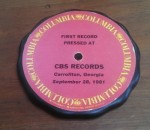 My best early tour of the CBS Records plant was conducted by my friend Brad Pirch. He took me into every department and described what the engineering issues were in each place, how the process used to work and what was currently being done to improve. He conveyed the same attitude as the Engineers from HQ: the plant is a wonderland of problems waiting to be solved. They shaved off minutes and pennies, which led to the high productivity and lower labor required in each successive plant. Brad had both scope and detail in his explanations. I begged Brad for memories about his 40 years as an engineer with CBS Records and he responded brilliantly. Enjoy!
My best early tour of the CBS Records plant was conducted by my friend Brad Pirch. He took me into every department and described what the engineering issues were in each place, how the process used to work and what was currently being done to improve. He conveyed the same attitude as the Engineers from HQ: the plant is a wonderland of problems waiting to be solved. They shaved off minutes and pennies, which led to the high productivity and lower labor required in each successive plant. Brad had both scope and detail in his explanations. I begged Brad for memories about his 40 years as an engineer with CBS Records and he responded brilliantly. Enjoy!History of Muzak
My first experience with Muzak was in an elevator in Seattle. My mother had just remarked, “Now this is music!” while we listened to an instrumental of a Beatles song I was yelled at for listening to 2 days earlier. I didn’t appreciate Muzak until I started calling on them as a commercial rep in Seattle, and even then I had no idea of the accomplishments of the founder, George Owen Squier. In the course of researching audio history I was turned on to a well-researched history of Muzak (Thanks, Dean!) History of Muzak by Peter Blecha with excellent exhibits from the Nissen Collection. Peter wrote “Sonic Boom” which I gave a rave review. The Muzak article intrigued me and I delved into old articles to learn more.
The story begins with George Owen Squier (1865-1934.) Mr. Squier was a Major-General and Chief Signal Officer in the US Army. The July 14, 1919 issue of Scientific America introduces Mr. Squier and shows details of his patent to use living trees as antennae. All the details can be seen at Rex Research. To use a tree for an antenna, simply drive a nail 2/3 of the way up the tree, attach wire, and connect wire to receiver. Check this out, it is charming. British Patent Specification # 149,917 Improvements in & Relating to Radio Communication Systems. (more…)
A Record Record Plant: CBS Records History
 In 1983 I had the honor of working in what was then the largest record plant in the world.
In 1983 I had the honor of working in what was then the largest record plant in the world.
The actual claim is that the CBS Records plant in Carrollton, GA was “the largest recorded-music manufacturing plant in the world.” This plant was awesome. We did everything – mastering, record pressing, printing, tape coating, injection molding, high-speed tape duplication, cassette assembly, packing, shipping, and record club fulfillment. (We also pressed video discs with injection-molded carriers, and no, I don’t want to talk about it. Yet.) Train cars of chemicals and vinyl pellets pulled up to what I was told were sixteen acres under one roof, although I haven’t verified that 700,000-square- ft estimate. People in the industry called us the Death Star.
Before the CBS record plant in Carrollton, GA was built four years before, (more…)
William Shatner in Audio History?
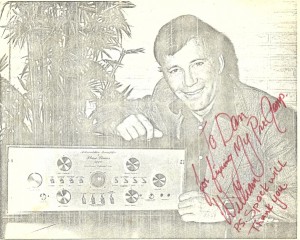 The closest I have ever gotten to William Shatner was at a trade show. Someone who worked for him bought me a cab ride and promised to put it on his expense account so I could truthfully say “William Shatner bought me a cab ride.” (And yes, I have a communicator pin.)
The closest I have ever gotten to William Shatner was at a trade show. Someone who worked for him bought me a cab ride and promised to put it on his expense account so I could truthfully say “William Shatner bought me a cab ride.” (And yes, I have a communicator pin.)
Doesn’t hold a candle to the awesome personal thank you from William Shatner to Dan Kiefer from the Phase Linear Service Department. Color me impressed (and maybe a teeny bit jealous.) My latest connection to Shatner? We both owned the same preamp. Thank you to Dean Nissen for picture and info.
1965 Seattle Audio Stores Banding Together
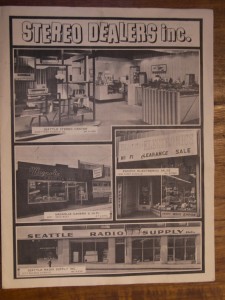 This was a great find: a group of Seattle audio stores banding together to promote stereo and component systems. When you chart the existence of each store, it puts the date of this group from 1965-1968. It looks like component audio needed some help in gaining acceptance from the whole family.
This was a great find: a group of Seattle audio stores banding together to promote stereo and component systems. When you chart the existence of each store, it puts the date of this group from 1965-1968. It looks like component audio needed some help in gaining acceptance from the whole family.
“FIDELITY? Faithfulness! A Banker to his Depositors…….a Sailor’s Wife when he’s at Sea……..and in a Stereo System, in reproducing sound exactly as in the ORIGINAL PERFORMANCE!
HIGH FIDELITY? Meaningless! “high” obviously means considerably less than completely faithful and is unacceptable in a Banker, a Wife, or a Stereo System.”
Maybe I should feel weird about being compared to a Stereo System, but in our line of work isn’t that a compliment?
Here are the stores that belonged to Stereo Dealers, Inc.:
Electricraft, Inc. 1408 Sixth Ave
Hamlin’s Audio Workshop 2128 Third Ave
Hess Recorder Co’s Stereo Center 620 SW 152nd
High Fidelity Headquarters 4741 University Way NE
Lafayette Radio Electronics 1210 First Ave
Magnolia Camera & Hi Fi 2231 32nd W
Pacific Electronics Sales 1209 First Ave
Seattle Radio Supply 2117 Second Ave
Seattle Stereo Center 2440 1st Ave S
I would love to hear from you. Do you recognize this brochure? Did you work in one of these stores? Drop me a line! Below is the rest of the brochure.
Just for fun I mapped the Stereo Dealers in this group. Watch for the upcoming Map of Retailers 1948-2000.Thank you to the Roush Collection.
Booth Babe Bother
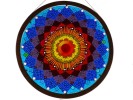 I had my first panic attack in the fall of 1977. I had just eagerly opened my booth package from the Consumer Electronics Show. It was my first CES, as well as my first time exhibiting. I ripped open the package, and in addition to the forms was a substantial little booklet – with head shots of girls my age! WTF? What could this be?
I had my first panic attack in the fall of 1977. I had just eagerly opened my booth package from the Consumer Electronics Show. It was my first CES, as well as my first time exhibiting. I ripped open the package, and in addition to the forms was a substantial little booklet – with head shots of girls my age! WTF? What could this be?
As I read the booklet and it dawned on me that you order booth babes from a catalog, panic rose with the thought – how are they going to know I’m real and not a booth babe? The babes were all just nice looking girls and could have been my friends. There’s no difference!
Breathing into a paperbag worked that time, but it just doesn’t stop. (more…)
Hamlin Audio
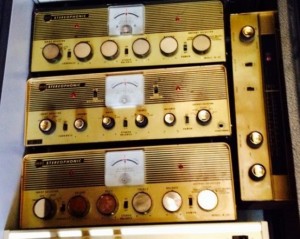 In exploring old audio history I often talk to guys that could reach into their pocket right that minute and retrieve a part from a 30-year-old product, as well as random parts from their current project. This pre-Memorial Day lunch was different.
In exploring old audio history I often talk to guys that could reach into their pocket right that minute and retrieve a part from a 30-year-old product, as well as random parts from their current project. This pre-Memorial Day lunch was different.
A guy walks into SpeakerLab (How many good stories could start like that? So many.) One thing led to another (Thanks, Ann!) and suddenly I was at lunch with a vintage-audio-component super collector named Patrick Roush. This guy can, right now, set up a dream audio stack with era-appropriate speakers and media. He has stacks of gear, carefully maintained and in working order. He has tubes, of course, and he has a tube tester. For a while I was happy just listening to his component/loudspeaker/media combinations. It was like he was painting a picture of the preferred audio stacks of my older brother and his frat brothers, each one different but choice.
Because we are completing a database of influential audio Retailers in the PNW post 1948, my ears perked up when Patrick described a stereo component built by H.H.Scott and sold under the brand name Hamlins Audio Workshop.
The owner of Hamlin’s was Philip Deming Hamlin (1917-2014). Mr. Hamlin’s electronic expertise bloomed during his five years of WWII where he excelled in Radio and Radar Research, rising from private to Major. He installed one of the the first cable TV systems in the world on Alki in 1949. He is also famous for inventing the cable converter box. He owned a factory named Hamlin International Corp and manufactured cable boxes and accessories. In the mid-fifties to mid sixties Mr. Hamlin sold stereo audio components, as well as manufacturing his own speakers and amplifiers. And that brings me back to the lunch with Patrick.
After introducing me to Hamlin’s equipment (some of it made by H.H. Scott), the conversation took a meditative turn when Patrick commented about the huge societal effect of the return of the soldiers of WWII. We also touched on Vietnam; which was a factor at the start of many of the audio industry careers we have been documenting. In addition, audio components came back to the states in great numbers as the Vietnam vets returned (Sansui, anyone?) Vets from both wars came back and changed the landscape with their new technical skills and interests, war-related advances in communication technologies, and the G.I. Bill.
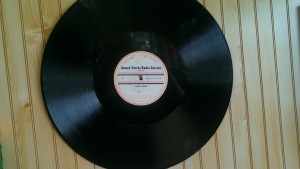 As we made our way out of Salmon Bay Cafe Patrick showed me where the cafe had added on during the 1990s. We turned to find the exit and bam! in front of us on the wall hung a 16″ disc labelled US War and Navy Departments. It was a WWII-era,old format record. I was suddenly appreciating Memorial Day in a new way. We celebrate veterans for their service, but we can also appreciate the many good things and opportunities they created when they got back. And audio industry history is everywhere.
As we made our way out of Salmon Bay Cafe Patrick showed me where the cafe had added on during the 1990s. We turned to find the exit and bam! in front of us on the wall hung a 16″ disc labelled US War and Navy Departments. It was a WWII-era,old format record. I was suddenly appreciating Memorial Day in a new way. We celebrate veterans for their service, but we can also appreciate the many good things and opportunities they created when they got back. And audio industry history is everywhere.
For more about Philip D Hamlin The Old CATV Equipment Museum
THE RACK SYSTEM—Darth Vader Comes to Audio
A few of you are just about old enough to remember a particularly ugly era in the history of Consumer Electronics, a time that many contend (including me) started audio components on their death spiral that continues even today. It started sometime around 1975 and was pretty much over by the late 1980s. This was the era of the “rack system.”
It was innocent enough at the jump as most evil intended entities are. Separate audio components were hot items in the mid 1970s. Specialty stores were everywhere. Here in the Boston area alone, Harvard Square boasted eight stereo stores at the peak.
Manufacturers, most notably Japanese manufacturers, were in a race for greater and greater market share. By that time they dominated the receiver business, having vanquished or acquired the great American audio brands of the 1950’s and 1960s. They had made great strides in the turntable arena stealing business from European brands by successfully convincing the vinyl buying public, mostly stoners, that playing records one at a time was better for the planet that stacking them on a record changer, that malevolent contraption straight out of your Mom’s fruitwood veneer Sylvania console from 1957.
Yet the boys from the Pacific Rim had close to zero market share in freestanding speakers. True, they had improved the boxes cosmetically moving away from the fretwork grilles of the military PXs in the Viet Nam era to something that at least looked like a KLH. But putting lipstick on those pigs did nothing to help sales and speakers were the most profitable components in the system. (OK. OK. I’m not forgetting phono cartridges.) They needed something to increase the top and bottom lines and sell more speakers. Enter the rack.
The rack system looked like component stereo pieces placed on shelves in a piece of furniture. Safe enough, right? But the “components” were one big piece of electronics that shared a power supply thereby defeating the whole raison d’être for buying components over consoles and compact systems in the first place. It was deceptive. It was hypocritical. And it sounded just dreadful. But it succeeded. It was so successful in fact that major specialty audio stores were forced to carry it for of fear losing business.
The manufacturers sold these things to everyone short of convenience stores. Most notably, they put places like Macy’s and JC Penney in the specialty stereo business for the first time. Craving more, they moved even further down market to the likes of Target and K-Mart. Finally, the systems found their way onto little brochures tucked into virtually every credit card billed ever mailed.
Then suddenly they were gone. But like a hurricane, tornado or tidal wave their relatively brief time on the audio scene caused destruction that would last a long long time. Component audio came back with the rise of home theater but the thrill of a carefully chosen music system was dealt a near fatal blow.
(This piece originally appeared on the CE Pro website December 17, 2013 with the title “Can You Trust Your Vendors?” It has been edited for AIHS and is reprinted with the permission of EH Publishing, Inc.)
Electricraft Roots of Remarkable Audio
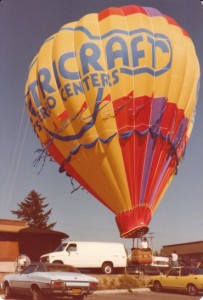 In studying the history of the audio industry in the Pacific Northwest the name Electricraft comes up a lot, whether you are talking about remarkable audio engineers, recording studios or retail stores. Like a bookstore in Berkeley or the roundtable at the Algonquin, Electricraft has all the markings of an extremely happening place in its day, with influence spreading out in time.
In studying the history of the audio industry in the Pacific Northwest the name Electricraft comes up a lot, whether you are talking about remarkable audio engineers, recording studios or retail stores. Like a bookstore in Berkeley or the roundtable at the Algonquin, Electricraft has all the markings of an extremely happening place in its day, with influence spreading out in time.
Electricraft had 8 stores and did $12M (equiv of $ 46M today) in its heyday. It was started by Oliver Runchey, Sr., and was run with help from his son Oliver Runchey, Jr., his daughter Betty Hall, and his son-in-law E.M. Ted Treanor. The formal opening was held Friday night, October 16, 1947 at their Home Appliance Headquarters at 622 Union Street. Their opening ad in the Seattle Times declared their product lines as Zenith, Emerson, Motorola Radios, and their specialty, Recording and Recording equipment.
During their Grand Opening (more…)
Major Buying Groups—The Glory Days Of The Mid 1970s
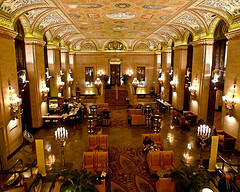 Chicago, January 1976. Not just Chicago but the Conrad Hilton Hotel, then the Crown Jewel of the Magnificent Mile in Chicago, January 1976. Back when CES was a twice a year event and both shows were in the Windy City. Before Las Vegas!
Chicago, January 1976. Not just Chicago but the Conrad Hilton Hotel, then the Crown Jewel of the Magnificent Mile in Chicago, January 1976. Back when CES was a twice a year event and both shows were in the Windy City. Before Las Vegas!
It was 5:30PM when I walked unnoticed into the Grand Ballroom. Very important men were gathered in small groups holding adult beverages and talking amongst themselves. I recognized a few of them from trade magazine photos. There was Jack Luskin from Baltimore talking to Alan Wurtzel from the Ward’s Company (before Ward’s decided that Circuit City was a way cooler name). In another group stood Dick (of Newmark and) Lewis laughing it up with Dave and Gene Mondry from Highland in Detroit and Saul Gold the Executive Director of the NATM Buying Corp.
Every one of the men mentioned in that last paragraph is in the Consumer Electronic Association Hall of Fame. They were the leaders of the Forty Thieves, the affectionate but somewhat damning nickname for the National Association of Television Merchants. The 16 (which may have seemed like 40) members of NATM were the most powerful hard goods retail force in America well into the 1980’s.
If you were a vendor or competitor of a NATM member during this era you know how significant this group was.
I had recently been hired as the youngest buyer in Boston-based Lechmere’s history. I bought Hi-Fi/Stereo, considered an emerging category. Lechmere was no shrinking violet in NATM. The founding Cohen family (also each a CEA Hall of Famer) had recently sold their 4 store chain to Dayton-Hudson Corporation which had also just purchased Target Stores. Either Lechmere or Target was going to be D-H’s choice to nationally go head-to-head with K-Mart and/or Sam Walton’s upstart discounter Wal-Mart. (Guess who won that contest?) (more…)
Welcome Chuck Schneider!
The AIHS is proud to announce that CHUCK SCHNEIDER has joined the Society as East Coast Executive Editor. 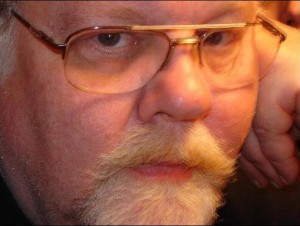
Chuck Schneider is a retired CE veteran executive turned popular freelance writer. Chuck has worked the retail sales floor, been a major chain store buyer, a manufacturers’ rep salesman and rep firm principal spanning 45 years in the industry.
Chuck has won awards for his work in trade publications. He has written for Gatehouse Media, various travel publications and recently the CEA. He is currently Contributing Writer for CE Pro magazine, the first and only freelance writer to ever appear on the masthead in that publication’s twenty year history.
He is a cum laude graduate of Boston University with a major in history and was inducted into the Delta Mu chapter Phi Alpha Theta, National History Honor Society. As a graduate student at the University of New Hampshire, Chuck pioneered the genre of Oral History as an acceptable thesis format.
For six weeks every year, Chuck is a certified Real Bearded Santa Claus bringing joy to private parties and charitable organizations. For the rest of the year Chuck works for Kathy, his wife of 35 years, in her long established antique business. They exhibit all over the Northeast. They have two grown children.
All content with topics originating east of the Mississippi will be submitted to and reviewed by Chuck prior to publication. Please join us in welcoming him aboard!
Chuck can be reached at kschnei962@aol.com.
Prankster In Our Midst?
The more I find out about the history of the audio industry in the Pacific Northwest the more interesting it becomes. And I have the joy of a discovery totally unrelated to the topic at hand. Like this one:
 For a while in my early years I attended Clark College in Vancouver, WA. One day Ken Kesey was scheduled to speak and although I went a little early I still ended up standing at the back. Luckily it was a small room and I could see him easily. Kesey knocked me over. It was the first time in my life I experienced charisma and I was feeling it at the back of the room. What was that? I remember it like it was yesterday.
For a while in my early years I attended Clark College in Vancouver, WA. One day Ken Kesey was scheduled to speak and although I went a little early I still ended up standing at the back. Luckily it was a small room and I could see him easily. Kesey knocked me over. It was the first time in my life I experienced charisma and I was feeling it at the back of the room. What was that? I remember it like it was yesterday.
Kesey spoke about his life, his future, our future. For some reason he brought a clean-cut, handsome young blond man out of the audience and began having a one-on-one conversation with him as part of his presentation. We all wanted to be that guy. Kesey wove thoughts of freedom, creativity, personal responsibility. I had my mind opened and glimpsed possibilities never even considered until that day. Quite a memorable experience.
More than 35 years later, I am sitting on the boat with Jay Huber, quizzing him about his youth and how he found his way into the Audio Industry. I remarked that he must have attended Clark College around when I did. We confirmed dates and he offered up one of his most distinct memories: the day Ken Kesey invited him to the front of the room.
Turns out, Jay was not only invited to the front of the room – he was invited to come live at Kesey’s farm in Eugene! Jay declined being a ’70s Merry Prankster to our benefit, going on to help shape our retail landscape and product choices. Among other contributions, he co-founded several audio companies, including Croft-Huber Sound, Definitive Audio, and White-Jay Custom Audio/Cello. Jay’s story is woven through the history of audio in the PNW and beyond, so stay tuned…
Thanks, Bill
In the process of begging for photos of the old days from my friends, Bob Gudgel let me have this picture of our friend Bill Skinner. I hadn’t seen him since before a terrible motorcycle accident took his life in the mid eighties. He was a great guy and a technical mentor to many people in the audio world. He designed for companies including Phase Linear and TAPCO, where this shot was taken. (more…)
Christmas Past
I can’t even attempt to name everyone here, for obvious reasons, but clearly Audio Control was a fun place to be in 1980. This is the Christmas card I received from them in December of that year. I’m not positive whose idea it was; I always suspected Ron Koliha (far right, kneeling)
Thanks to mutual friends and the urging of the parts reps (Was it Arrow, Radar Electric, Mouser? It’s a little foggy) I started buying line cords from Greg Mackie/Audio Control during the late 1970s. He and his associates were energetic, musical, and fun. And they sold me the cords at their price, even though they were buying thousands and I only needed hundreds.
So – are you in this photo?
Before Here, There, and Everywhere
 This post is a raving, all thumbs up review of Here, There, and Everywhere by Geoff Emerick with Howard Massey. This is the story of a 19-year-old EMI employee being assigned by George Martin to record the Beatles. Incredible insight into the old world of studio engineering as it breaks through its own stuffiness and yields to new technology, new sounds, and new ways of looking at sounds. They learned how to produce and use sounds artistically – while having to fight white lab coats and suits to be able to do it!
This post is a raving, all thumbs up review of Here, There, and Everywhere by Geoff Emerick with Howard Massey. This is the story of a 19-year-old EMI employee being assigned by George Martin to record the Beatles. Incredible insight into the old world of studio engineering as it breaks through its own stuffiness and yields to new technology, new sounds, and new ways of looking at sounds. They learned how to produce and use sounds artistically – while having to fight white lab coats and suits to be able to do it!
Geoff tells cool, problem-solving stories. One early story describes how he tries to satisfy each band member’s dream of their sound. He explains that Paul would ask for specific things, like more timpani, where John would want to sound like “the Dali Lama on top of a mountain,” and Geoff’s job was to fulfill these dreams. (John’s dream was realized with a Hammond and a Leslie.)
The descriptions of how recording used to work at what would become Abbey Road Studios, and how trying to serve the artist forced changes in the conservative company and its recording methods is fascinating, and the author has a calm, technical viewpoint that made the book easily devour-able and I was sad that it ended. If you love recording, companies in transition, the Beatles – you will love this book.
Christmas Past
I can’t even attempt to name everyone here, for obvious reasons, but clearly Audio Control was a fun place to be in 1980. This is the Christmas card I received from them in December of that year. I’m not positive whose idea it was; I always suspected the born-to-be-famous Ron Koliha (far right, kneeling.)
Thanks to mutual friends and the urging of the parts reps (Was it Arrow, Radar Electric, Mouser? It’s a little foggy) I started buying line cords from Greg Mackie/Audio Control during the late 1970s. He and his associates were energetic, musical, and fun. And they sold me the cords at their price, even though they were buying thousands and I only needed hundreds.
So – are you in this photo?
Saturday Tube Testing
I used to think I was a modern, emancipated woman. That my choices were my own, and I was striking out into new territory with my career. Now not only is that concept dated, I am also realizing with age that I am, much more than I used to believe, a product of my upbringing. Was it inescapable?
A trip to the hardware store every Saturday to test vacuum tubes was part of the rhythm of my life. My parents had four kids,so my dad didn’t do much without a kid or four. I don’t remember which equipment we owned that had such a voracious appetite for tubes; chances are whatever it was my dad probably built it. For years we went nearly every weekend. Now I realize that was the watering hole for the HAM Operators and Popular Electronics enthusiasts, but as a child I thought it was just a Saturday errand, like the grocery store and the (you kids stay in the car!) liquor store.
I remember him building a Heathkit* meter, and for years I didn’t watch TV without holding a big mirror and suffering bouts of vertical roll as my dad lived happily behind the set he built. (more…)
Been to an Employee Reunion lately?
This was a very interesting weekend for those curious about Audio Industry History in the NW. On one coast, folks in North Carolina celebrated CarverFest . This is an annual celebration (since 2007) of all things Bob Carver: his patents, his products, his companies, and his willingness to mix and answer questions from his fans. You can check it out yourself the Carver fan site www.theCarversite.com or maybe Bob’s Facebook page.
At the same time, back on our coast, forty people came together to celebrate working at Carver Corporation during its twenty-year run. It was a Carver Corporation Employees Reunion Picnic. I had never heard of such a thing. Have you been to a reunion of a company that is no longer viable? It showed a lot of people loved working at Carver, were passionate about their jobs, and enjoyed their co-workers. I think this level of care by all employees helped make the products the long-lived things they were.
The picnic was quite fun (although I got there late and missed lots of people that I hope to see next time) – Carver alums should check out the Carver Employee Group on Facebook for word of future events!
The Employees didn’t seem to know about CarverFest, and certainly CarverFest doesn’t know much about the Employees. There are a lot of clever and triumphant stories hidden to history of techs, engineers, designers, assemblers, QC, purchasing, and products, and I believe some of these stories should be out there!
I love that we were building things, fixing things, making things happen. A small factory is a wonderful place to work; every department is important and predictable rivalries make the plant go round ( Engineers vs Sales – anyone?)
The fact that people worldwide still buy, sell, trade, and celebrate audio equipment from 1975-1995 is partly a reflection of how much went in to those products in the first place. And as this week of celebration has shown us, the pride of the internal teams live on, just like the consumers love of the gear.
Who’s running the show?
In about 1986 Bob Carver wanted to go on vacation, but he was worried about decisions made in his absence. In our last management meeting before his departure we tried to calm his mind. Or blow it.
Top row from left: Heather Hawley, Cory Rivers, Hugh Goring, Clyde, Ron Havercamp
Bottom row from left: Colleen McNaur, Sue McCauley, Eileen Rutledge, Bob Carver, Marian Lundberg
First Contact
 On a dark night in October of 1976, my mother came up from Yakima to Seattle to sit with me while I packed up and left my husband. She was disappointed and nervous, and even more so when I convinced her to take one hit from the joint I was enjoying as I packed. After her hit she began looking around with paranoia, certain the cops would be knocking on the door any minute. The panic was not alleviated when a large pounding actually began on my front door. She was convinced it was the police. I opened the door to find a 6’4”, shaggy-headed stranger who asked “Did you order 12 EQ kits with no chassis from Popular Electronics?” (more…)
On a dark night in October of 1976, my mother came up from Yakima to Seattle to sit with me while I packed up and left my husband. She was disappointed and nervous, and even more so when I convinced her to take one hit from the joint I was enjoying as I packed. After her hit she began looking around with paranoia, certain the cops would be knocking on the door any minute. The panic was not alleviated when a large pounding actually began on my front door. She was convinced it was the police. I opened the door to find a 6’4”, shaggy-headed stranger who asked “Did you order 12 EQ kits with no chassis from Popular Electronics?” (more…)
Sonic Boom
Enjoy reading about the history of audio technology? I would like to recommend the following highly enjoyable read:
Sonic Boom by Peter Blecha
This book is the title of the post because it really felt like a sonic boom! If you were anywhere around the Northwest in the ’50s,’60s,’70s ’80s – this book will really take you back – and tell you things about your own time you never knew. Great research into not just the people and the companies, but the music, the usage of instruments – the author is my new hero.
In 1976 I shared a house with a guy who performed as “Hank Rasco and the Wasted Rangers.” I almost dropped the book (but would never now that it’s on my phone!). The author knew about the Wasted Rangers! Other flashbacks were set off by the memory of Heart playing the Aquarius! OMG I was right back in the Aquarius. The level of detail is remarkable, but the true beauty of this book is in the more distant past – I don’t want to give anything away, but I never knew the Northwest had a direct connection to the blues. The English may have listened to the records and evolved their style from them – but did you know the kids in Seattle not only got to see them live, but the blues musicians actually taught them things and let them play! BB King, Bobby Blue Bland and other hot artists of the day came through the area and excited and inspired musicians directly!
Respect to the author, Peter Blecha. Incredible work.
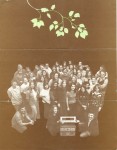
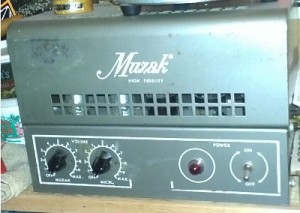

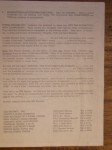
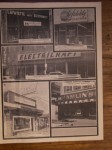
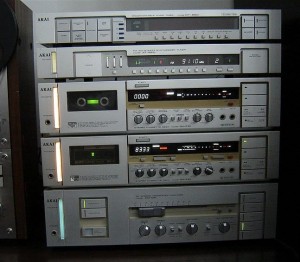


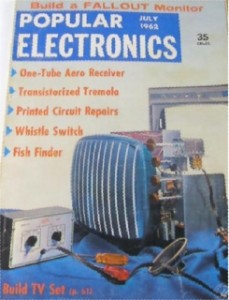


Recent Comments